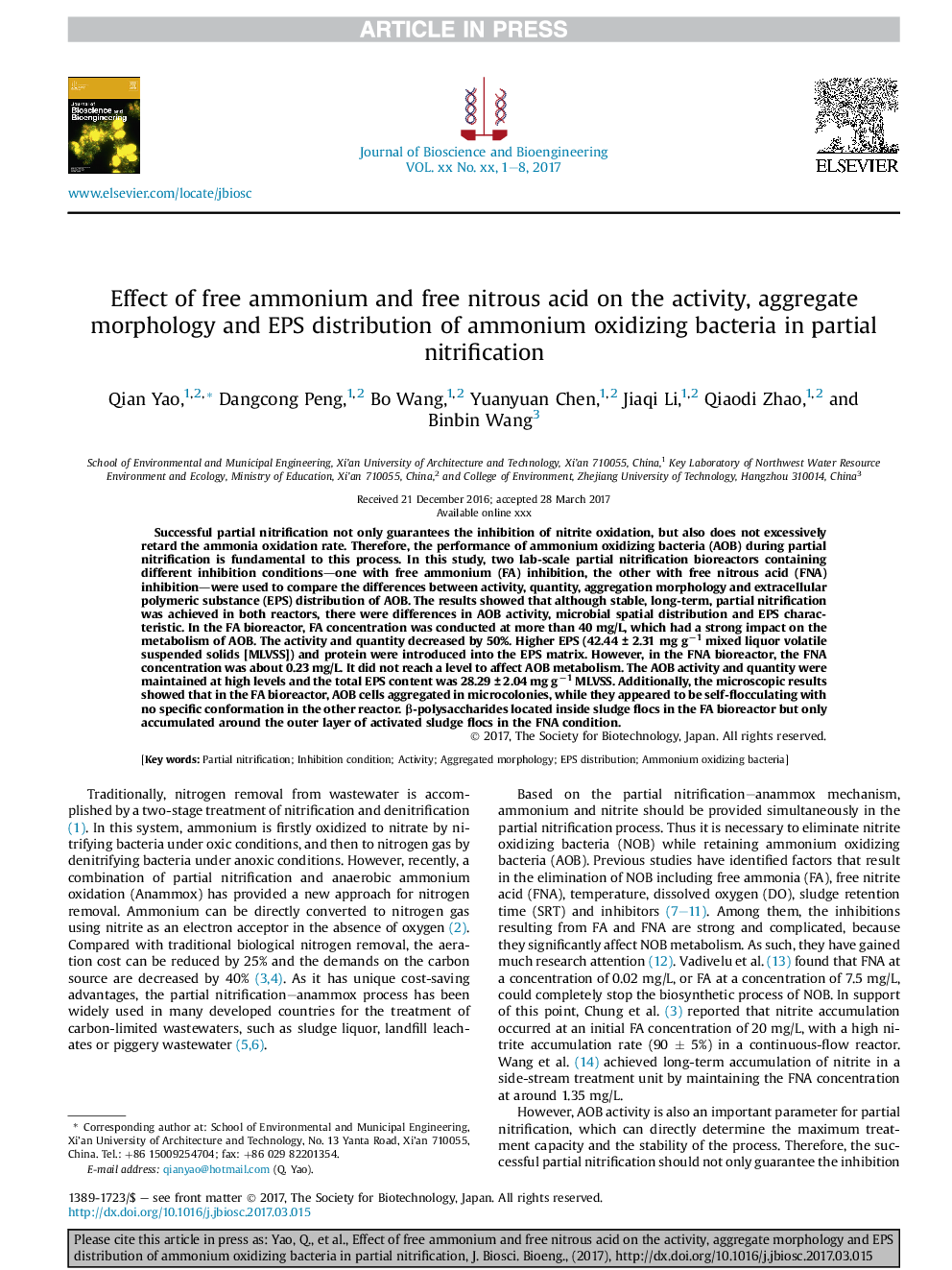| Article ID | Journal | Published Year | Pages | File Type |
|---|---|---|---|---|
| 4753248 | Journal of Bioscience and Bioengineering | 2017 | 8 Pages |
Abstract
Successful partial nitrification not only guarantees the inhibition of nitrite oxidation, but also does not excessively retard the ammonia oxidation rate. Therefore, the performance of ammonium oxidizing bacteria (AOB) during partial nitrification is fundamental to this process. In this study, two lab-scale partial nitrification bioreactors containing different inhibition conditions-one with free ammonium (FA) inhibition, the other with free nitrous acid (FNA) inhibition-were used to compare the differences between activity, quantity, aggregation morphology and extracellular polymeric substance (EPS) distribution of AOB. The results showed that although stable, long-term, partial nitrification was achieved in both reactors, there were differences in AOB activity, microbial spatial distribution and EPS characteristic. In the FA bioreactor, FA concentration was conducted at more than 40 mg/L, which had a strong impact on the metabolism of AOB. The activity and quantity decreased by 50%. Higher EPS (42.44 ± 2.31 mg gâ1 mixed liquor volatile suspended solids [MLVSS]) and protein were introduced into the EPS matrix. However, in the FNA bioreactor, the FNA concentration was about 0.23 mg/L. It did not reach a level to affect AOB metabolism. The AOB activity and quantity were maintained at high levels and the total EPS content was 28.29 ± 2.04 mg gâ1 MLVSS. Additionally, the microscopic results showed that in the FA bioreactor, AOB cells aggregated in microcolonies, while they appeared to be self-flocculating with no specific conformation in the other reactor. β-polysaccharides located inside sludge flocs in the FA bioreactor but only accumulated around the outer layer of activated sludge flocs in the FNA condition.
Related Topics
Physical Sciences and Engineering
Chemical Engineering
Bioengineering
Authors
Qian Yao, Dangcong Peng, Bo Wang, Yuanyuan Chen, Jiaqi Li, Qiaodi Zhao, Binbin Wang,
